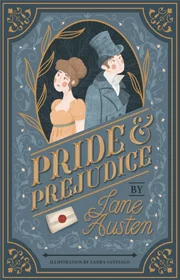
“Pride and Prejudice” by Jane Austen is a classic novel set in early 19th-century England. The story revolves around Elizabeth Bennet, one of five sisters, and her evolving relationship with the wealthy Mr. Darcy. Filled with wit and social commentary, the novel explores themes of love, class distinctions, and societal expectations. As Elizabeth and Mr. Darcy navigate misunderstandings and personal prejudices, the novel unfolds into a tale of romance and personal growth, offering timeless insights into human relationships and societal norms.
Read Pride and Prejudice Flipbook:
Listen to Pride and Prejudice Audiobook:
Title: “Pride and Prejudice”
Author: Jane Austen
Publication Year: 1813
Setting: Early 19th century in the English countryside.
Protagonist: Elizabeth Bennet, the second eldest of the five Bennet sisters.
Themes:
• Societal Expectations: Explores the rigid social norms and expectations of the Regency era.
• Class Distinctions: Examines the impact of social class on relationships and opportunities.
• Courtship and Marriage: Investigates the challenges and dynamics of romantic relationships and marriage.
Plot Summary:
• Focuses on Elizabeth Bennet’s relationship with Mr. Fitzwilliam Darcy.
• Revolves around misunderstandings, societal norms, and personal prejudices that hinder the characters’ romantic prospects.
• Elizabeth’s initial prejudice against Darcy and his supposed pride forms a central conflict.
Social Commentary:
• Known for its keen social commentary and satire.
• Provides insightful observations on the manners and morals of the time.
Characters:
• Elizabeth Bennet: Sharp-witted and independent protagonist.
• Mr. Fitzwilliam Darcy: Wealthy and complex character with initial perceptions of pride.
• Supporting Characters: Memorable characters like Mr. Collins and Lady Catherine de Bourgh contribute to the novel’s richness.
Narrative Style:
• Austen’s writing style is characterized by wit, irony, and a keen understanding of human nature.
• Dialogues and interactions play a crucial role in the development of the plot and characters.
Enduring Popularity:
• Celebrated for its timeless exploration of love, societal expectations, and the complexity of human relationships.
• Continues to be a staple in literature courses and is beloved by readers of all ages.
Legacy:
• Considered one of the greatest works of English literature.
• Adapted into numerous films, television series, and stage productions, showcasing its enduring cultural impact.